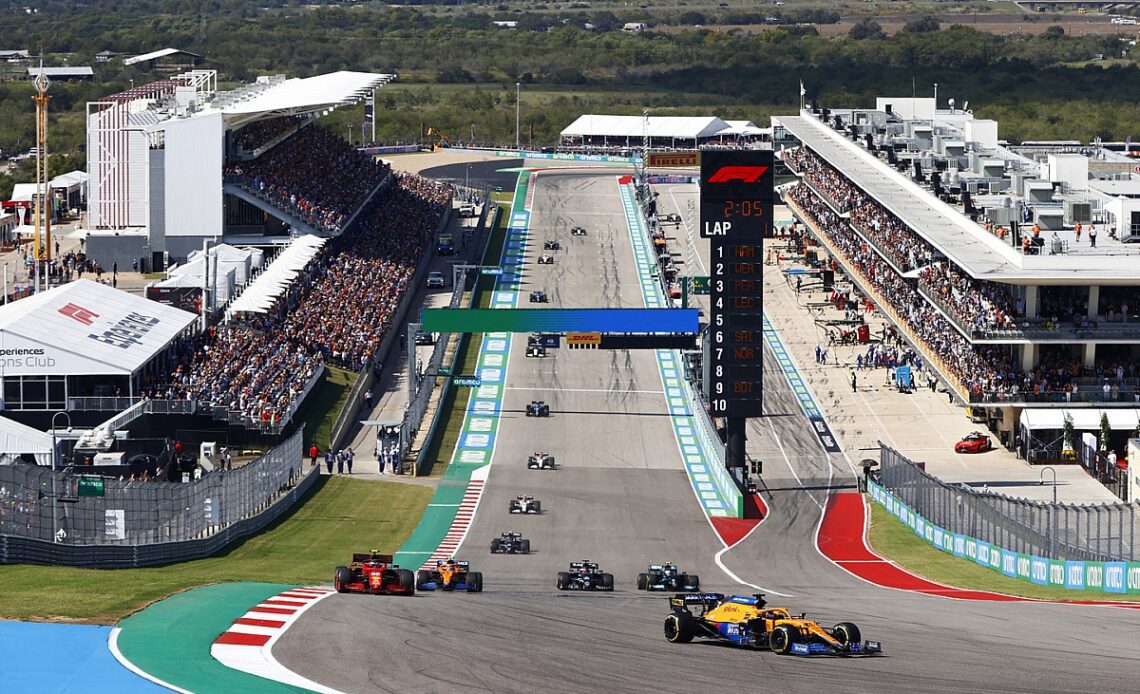It will be the 10th time the Circuit of The Americas will have hosted the United States Grand Prix, and its big birthday bash promises to be one to remember.
F1 is estimating that 440,000 fans will attend the race from Friday to Sunday, which would make it a record-breaking weekend. At a time when the glitz and glamour of Miami and, from next year, Las Vegas, is attracting much of the hype, neither can boast the sheer numbers of Austin.
The race has come a very long way. Earlier this week, F1 shared a video from its social media accounts back from the race in 2017. This was the race where, in its first US GP since Liberty Media had completed its takeover of the series, F1 tried to inject a slice of American sports pizzazz into proceedings by hiring famed boxing announcer Michael Buffer to help introduce the drivers.
Even the simple compilation of the drivers walking out to their exaggerated introductions from Buffer really summed up just how much things have changed. Lewis Hamilton – then just a three-time world champion – and Daniel Ricciardo are the only ones to really lap it up, soaking up the atmosphere. Max Verstappen and Kimi Raikkonen seem unbothered, the latter being one of nine drivers who raced at COTA in 2017 no longer on the F1 grid. Valtteri Bottas doesn’t even have a beard.
Watching it feels like a big step back in time. You’ve got the old F1 logo donning the hoardings, the grid girls helping usher the drivers in. But back then, this was F1’s first effort to appeal to the American fans by trying to fit itself more to their usual tastes.
At the time, it divided opinion. Those with fears over what impact Liberty’s ownership would have on F1 saw this as the kind of Americanization they didn’t want near their Euro-centric championship. But many took it for what it was: yes, it was a bit cheesy, but it was also a sign of F1 not taking itself so seriously – after so many years of doing so under Bernie Ecclestone, back when things like YouTube and social media weren’t deemed worthwhile.
It also showed an immediate awareness from F1’s new premiership that it could not simply keep going about things the same way if it wanted to crack America. It had to try new things, be it designing a new logo or trying to hype up the grid introductions, or getting its own theme music. It wasn’t until the start of 2018 that F1’s now-beloved intro debuted, which again faced criticism from those uneasy about these new…
Click Here to Read the Full Original Article at Motorsport.com – Formula 1 – Stories…

